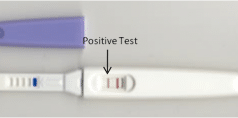
Obsessive Compulsive Disorder (OCD) is an extremely debilitating yet widely misunderstood mental and behavioral disorder.
People often chalk OCD up to behavioral quirks and strive for perfectionism. They assume that everyone with OCD obsessively washes their hands or color-codes their refrigerator.
But OCD is more than whimsical and eccentric behavior. On the contrary, people with OCD experience extreme anxiety, distress, and even guilt over their obsessions and compulsions.
Moreover, not everyone with OCD exhibits the same few frequently-cited and well-known symptoms like hand-washing or organizing. Instead, countless subtypes of OCD exist, with vastly different symptoms accompanying each OCD subtype.
In this post, we will look at some of the more unusual and lesser-known OCD subtypes. But first, let’s talk more about what OCD subtypes are.
What Are OCD Subtypes?
OCD subtypes are essentially different forms of OCD. So, to understand what OCD subtypes are, let’s review the basics of OCD.
OCD is a chronic, incurable, yet treatable mental and behavioral disorder comprising two overarching and interwoven symptoms — obsessions and compulsions:
- Obsessions are constant intrusive thoughts, mental images, ideas, or urges. These thoughts or ideas are “intrusive” because the sufferer does not want to have them but has no control over them.
- Compulsions are repetitive, borderline ritualistic behaviors to neutralize or temporarily soothe their obsessions. The sufferer experiences a lot of anxiety and discomfort if they do not perform these compulsions.
Interestingly, the specific subject matter of the obsessions and compulsions differ from person to person, giving rise to OCD subtypes. For example, one person with OCD might obsessively clean and organize, which corresponds to contamination and ordering OCD subtypes. On the other hand, another person with OCD couldn’t care less about dirt and germ but experiences constant unwanted taboo thoughts.
Some other examples of OCD subtypes include:
- Checking OCD
- Symmetry OCD
- Harm OCD
- Rumination OCD
- Perinatal OCD
- Taboo thoughts OCD
- Hoarding OCD
- Magical Thinking OCD
- False Memory OCD
- “Just Right” OCD
This list is by no means exhaustive. OCD specialists agree that there are countless forms of OCD; since obsessions and compulsions can revolve around anything, the number of OCD subtypes is virtually innumerable.
5 Unusual Forms Of OCD
Some OCD obsessions and compulsions are more identifiable and easily diagnosed than others. Let’s look at some of the more unusual and lesser-known OCD subtypes.
Relationship OCD
When it comes to romantic relationships, doubts, fears, and anxieties come with the territory. But someone with relationship OCD (ROCD) can not help but spend every waking hour questioning their relationship altogether.
Some common obsessions of ROCD are:
- Doubting whether your relationship is “right” or “complete.”
- Questioning whether you really deserve your partner or vice versa.
- Focusing too much on minor flaws
- Constantly reevaluating your partner’s attractiveness, intelligence, quirks, loyalty, morals, ethics, and intentions.
- Overthinking everything your partner says/ does.
Some common compulsions of ROCD are:
- Seeking reassurance about your relationship from your partner, friends, family, and coworkers.
- Constantly comparing your relationship with others
- Intimacy problems with your partner
- Being unfaithful to your partner
2. Somatic (Body-Focused) OCD
Our bodies are constantly performing countless life-sustaining functions, such as breathing, digestion, blood circulation, etc. Yet, we barely pay attention to them.
However, somatic OCD engenders a hyper-awareness of voluntary and involuntary bodily functions, be it their own or others’.
Somatic OCD obsessions revolve around common bodily functions, such as:
- Breathing
- Blinking
- Swallowing
- Pulse and heartbeat
- Movement of mouth and tongue
- Bladder and bowel movements
- Frequency and duration of eye contact
- Posture and positioning of limbs
Some common somatic compulsions are:
- Counting the frequency of blinking, breathing, and swallowing
- Trying to distract oneself from focusing too much on bodily functions
- Avoiding any situation or environment that may increase their somatic awareness.
3. Existential OCD
Existential OCD is an unhealthy obsession with “why.” It is a philosophically-based obsession where sufferers become consumed with existential questions— questions without an exact answer.
Some common obsessions of existential OCD are:
- The meaning and purpose of life
- Whether or not things are real
- The fear that one is dead or in a coma without realizing it
- Suspicions about the world being a simulation/ not real
Some common compulsions of existential OCD are:
- Asking friends, families, neighbors, coworkers, etc. about the meaning of life
- Overanalyzing feelings
- Excessively researching existential questions
- Seeking proof that this world and everything in it is real
- Comparing one’s thoughts with others to make sure they align with what is normal
4. Need-to-Know Obsessions
Our minds are really good at filtering out the constant bombardment of information from our surroundings every waking hour.
But some people don’t have this filter.
Many people with different subtypes of OCD often experience a burning need to know specific information. More specifically, they need to know and retain full information. If they only receive partial information or can not retain the information they receive, they experience a lot of distress and anxiety.
Some common need-to-know compulsions are:
- Mentally repeating a person’s name over and over again, so you don’t forget it
- Driving back around to fully read a billboard or signboard.
- Watching movie credits at a slow playback speed to read all names and titles
- Thoroughly reading dates, headlines, names, tags, timestamps, and other trivial information on social media posts.
- Reading the same sentence, paragraph, or page over and over again
5. Skin-Picking and Hair-Pulling
Skin-picking (excoriation) and hair-pulling (trichotillomania) fall under the category of OCD-related disorders in the Diagnostic and Statistical Manual of Mental Disorders (DSM-5).
The sufferers experience an uncontrollable urge to pick at their skin or pull out their hair, usually from their scalp, eyelashes, and eyebrows. They pick and pull so much that they start bleeding or permanently damage their skin and hair.
These compulsions are usually a response to stress.
Conclusion
OCD is a widely misunderstood mental and behavioral disorder. It is so misunderstood, in fact, that many clear symptoms of OCD often go unnoticed, even by experts.
Hence, it is important to recognize that there are countless forms of OCD, even though some may be more common than others. While the specific symptoms may differ from person to person, everyone with OCD experiences obsessions, compulsions, and all the crippling anxiety that comes with them.








